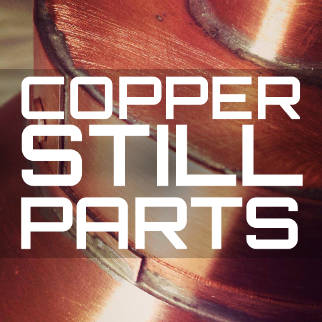This blog provides information for educational purposes only. Read our complete summary for more info.
India Pale Lager Homebrew Recipe
 Love a crisp lager? Love a hoppy IPA? Kyle and Ross combine both beer styles to brew up a deliciously refreshing India Pale Lager (or IPL). This essentially means that the beer is brewed like a traditional IPA, but fermented like a lager - which can get a little tricky (but is well worth it). We also went with a quick lager method as opposed to a traditional one which can take up to 45 days. Check out this article from Brulosophy that compares the two approaches.
Love a crisp lager? Love a hoppy IPA? Kyle and Ross combine both beer styles to brew up a deliciously refreshing India Pale Lager (or IPL). This essentially means that the beer is brewed like a traditional IPA, but fermented like a lager - which can get a little tricky (but is well worth it). We also went with a quick lager method as opposed to a traditional one which can take up to 45 days. Check out this article from Brulosophy that compares the two approaches.
Watch our video below to see how we break down the specific fermentation process. We also canned the beers ourselves and took them on a bike ride to be enjoyed alongside a scenic view. See how we brewed, fermented, canned, and enjoyed this perfect pairing of two great beer styles!
This recipe is for a 10 gallon batch of beer. It is tailored for our 20 gallon 240 volt system.
Video
Benchmarks
SG: 1.055
FG: 1.010
ABV: 5.91%
Water

15.36 Gallons (61.44 Q)
Grain Bill

12 LBS Pale Malt
7 LBS Pilsner (2-row)
8 OZ Biscuit Malt
6 LBS Munich Malt
Mash

Add 15.36 gallons (61.4 quarts) of water, along with 1.5 campden tablets. Add grains. Mash at 156 F (69 C) for 60 minutes. When mash is done, pull grains and let the wort drain out of the grain basket.
Boil & Hops

Pre Boil Volume: 12.87 Gallons
Post Boil Volume: 11.67 Gallons
Boil Time: 60 Min
Hop Additions
15 Minute Addition:
4 OZ Citra Hops
Whirlpool Addition:
4 OZ Sabro Hops
Yeast & Fermentation

We used a quick lager fermenting process for this beer. Check out this article from Brulosophy on how that differentiates from a traditional lager fermentation method.
Here’s a breakdown of the steps we took:
Chill wort to room temp, no higher than 70 F (21 C).
Transfer wort to a sanitized fermenter and pitch 2 packets of yeast (southern German lager yeast, WLP838).
Let it sit at room temperature (no higher than 70 F) for 12 hours, or until the airlock starts bubbling - whichever happens first.

Move the fermenter to a temp controlled environment (a small wine fridge would be perfect). Cool to 55 F for 5-7 days.
Once that’s done, remove the fermenter and return to room temp (roughly 70 F). Leave for 7 days (or until final gravity has been achieved).
Add gelatin.
Cold crash at 33 F. Let it sit for 2 days.
Finally, transfer the beer to your keg. Purge with CO2, and lager at 33 F for at least a week.
Canning
In this video, we also canned the beer ourselves.
By this point, most of the yeast had fallen out of suspension. The first thing we looked into was calculating how much priming sugar we would need to add. We ended up using an online calculator through Brewersfriend.com. Priming sugar is eaten by the yeast and CO2 is produced - thus carbonating the beer naturally!

We added 8 OZ of priming sugar to about a cup of boiling water and stirred it until it was dissolved. Be sure to calculate how much sugar to add using the calculator above.
Since we had 2 buckets of beer, we then divided the dissolved priming sugar evenly into 2 and added them to each bucket, followed by a packet of Safale US-05 Dry Ale Yeast (also divided into 2 buckets).

You can stir it, but stir very slowly.

Check out the canning section in our video to see how we canned the whole batch!
Tasting & Conclusion

We can’t ignore that just about anything would taste good after a long bike ride (check out our video), but we can confirm that this can be enjoyed just about anywhere. Like a lager, it’s crisp and refreshing, but the notes of fruit and citrus from the Citra and Sabro hops come through nicely. What else can you say? It’s an India Pale Lager, you can’t go wrong.

If you’re interested in seeing how we brewed our take on the IPL, our fermentation process, or how we canned the beer for our trip to Buzzard Rock, you can watch our video here!



